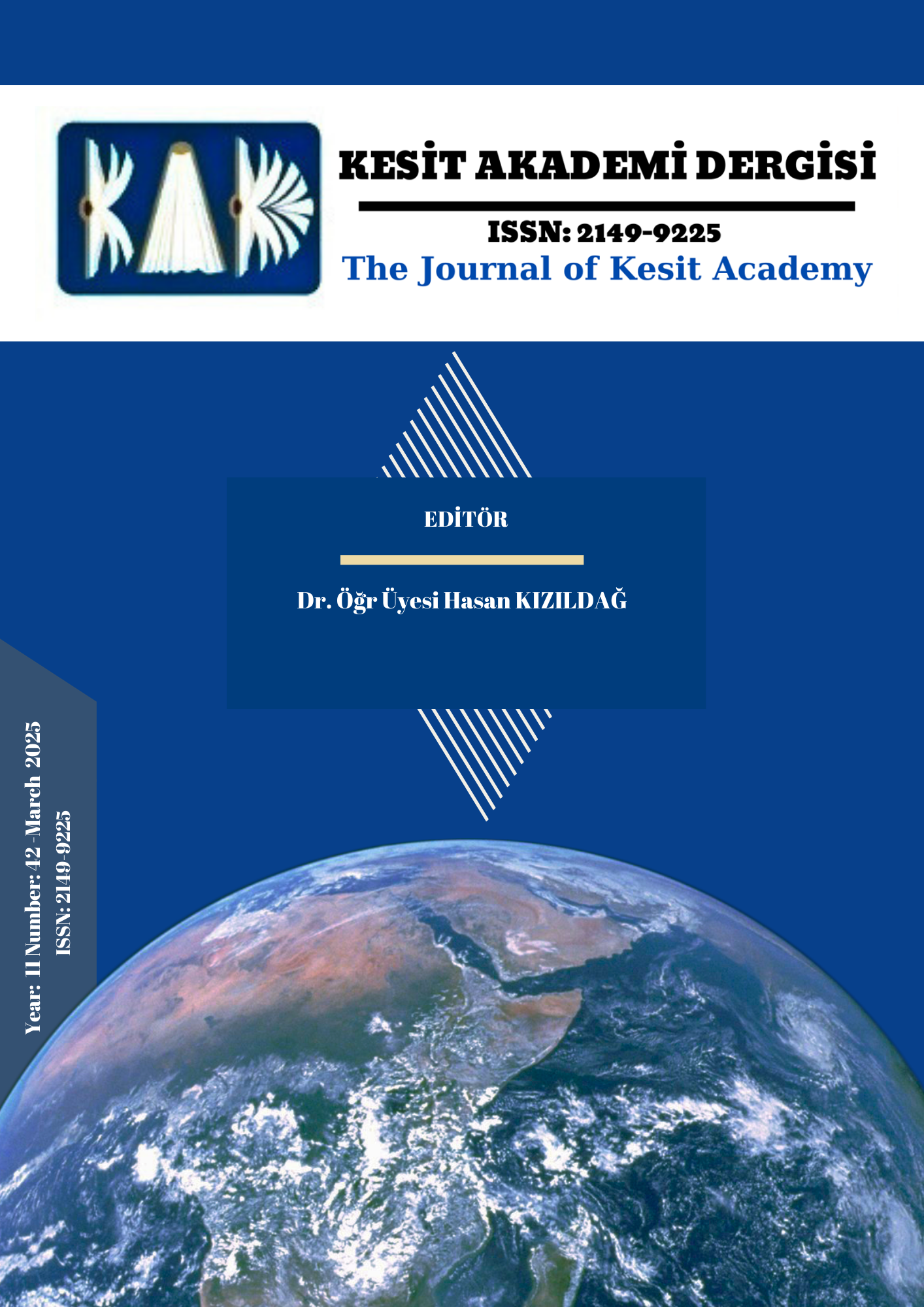Author :
Abstract
Bu çalışma, Osmanlı minyatür sanatının dijital teknolojiler aracılığıyla yeniden yorumlanmasını ve tarihî görsel üretim süreçlerine entegrasyonunu ele almaktadır. Çalışmanın temel amaçlarından ilki, 16. ile 18. yüzyıllar arasındaki İstanbul temalı minyatürlerin animasyon yoluyla canlandırılarak İstanbul’un dönüşümünü gösteren bir tanıtım filmi oluşturulmasıdır. İkinci amaç ise, Osmanlı Dönemi'nde minyatürlerde temsil edilmeyen tarihi olayların ve mimari yapıların, yapay zekâ kullanılarak belirli bir döneme ait nakkaş üslubuyla yeniden üretilmesini sağlamaktır. Araştırma kapsamında, Osmanlı minyatür sanatının dönemsel üslup özellikleri, kültürel mirasın dijitalleşme sürecindeki rolü, yapay zekâ destekli sanat üretiminin metodolojisi ve dijital animasyon teknikleri ele alınmaktadır. Bununla birlikte, Baudrillard’ın simülasyon teorisi bağlamında dijitalleşmenin sunduğu fırsatlar ve tarihî görsellerin yeniden üretimindeki etik boyutlar incelenmiştir. Minyatür sanatının geleneksel yapısı ile dijital sanatın olanakları arasındaki ilişki değerlendirilmiş, animasyon teknikleriyle tarihî sahnelerin nasıl canlandırıldığı açıklanmıştır. Araştırmada nitel veri toplama yöntemleri kullanılmış olup, incelenen minyatürler ikonografik ve üslup analizi ile değerlendirilmiştir. Arşiv taraması ve literatür incelemesi yöntemleri kullanılarak Osmanlı minyatür sanatının estetik ve teknik yönleri araştırılmış, yapay zekâ tabanlı üretim süreçleri ise deneysel uygulamalarla test edilmiştir. Stable Diffusion modeli ile üretilen görsellerin tarihî doğruluğu ve estetik uyumu, manuel düzenlemelerle optimize edilmiştir. Sonuç olarak, bu çalışma, kültürel mirasın korunması ve sanatsal üretimin dijital ortamda genişletilmesi açısından önemli bir örnek sunmaktadır. Yapay zekâ destekli görsel üretim süreçleri, sanat tarihi araştırmalarına yeni bir boyut kazandırırken, animasyon teknikleri kültürel mirasın daha geniş kitlelere ulaşmasını sağlamaktadır. Ancak, tarihî doğruluğun korunması için yapay zekâ ile üretilen görsellerin sanatsal ve akademik titizlikle değerlendirilmesi gerektiği vurgulanmaktadır.
Keywords
Abstract
This study investigates the reinterpretation of Ottoman miniature art through digital technologies, focusing on its integration within historical visual production methodologies. The primary objective of this study is to produce a promotional film that visualizes the transformation of Istanbul through the animation of Istanbul-themed miniatures dating from the 16th to the 18th centuries. A secondary objective involves the reconstruction of historical events and architectural structures absent from Ottoman miniatures through the application of artificial intelligence, generating visuals that adhere to the stylistic conventions of period-specific nakkaş (miniaturists). The research explores the stylistic characteristics of Ottoman miniature art across different periods, the role of digitization in cultural heritage preservation, methodologies for AI-assisted artistic production, and digital animation techniques. Furthermore, employing Baudrillard’s simulation theory as a theoretical framework, this study examines the implications of digitalization, particularly in relation to the ethical concerns surrounding the reproduction of historical imagery. The relationship between the traditional structure of miniature art and the possibilities of digital art is analyzed, along with an explanation of how historical scenes are animated using animation techniques. This study adopts qualitative research methodologies, utilizing iconographic and stylistic analysis to examine the selected miniatures. Archival research and literature review methods are employed to explore the aesthetic and technical aspects of Ottoman miniature art, while AI-based production processes are tested through experimental applications. The historical accuracy and aesthetic consistency of images produced via the Stable Diffusion model have been refined through manual interventions. Although AI-assisted visual production presents a novel dimension in art historical research, the implementation of animation techniques enhances the accessibility of cultural heritage for broader audiences. However, ensuring historical accuracy necessitates rigorous artistic and academic evaluation of AI-generated visuals. This study, therefore, provides a significant example of how digital technologies can contribute to both the preservation of cultural heritage and the expansion of artistic production.





